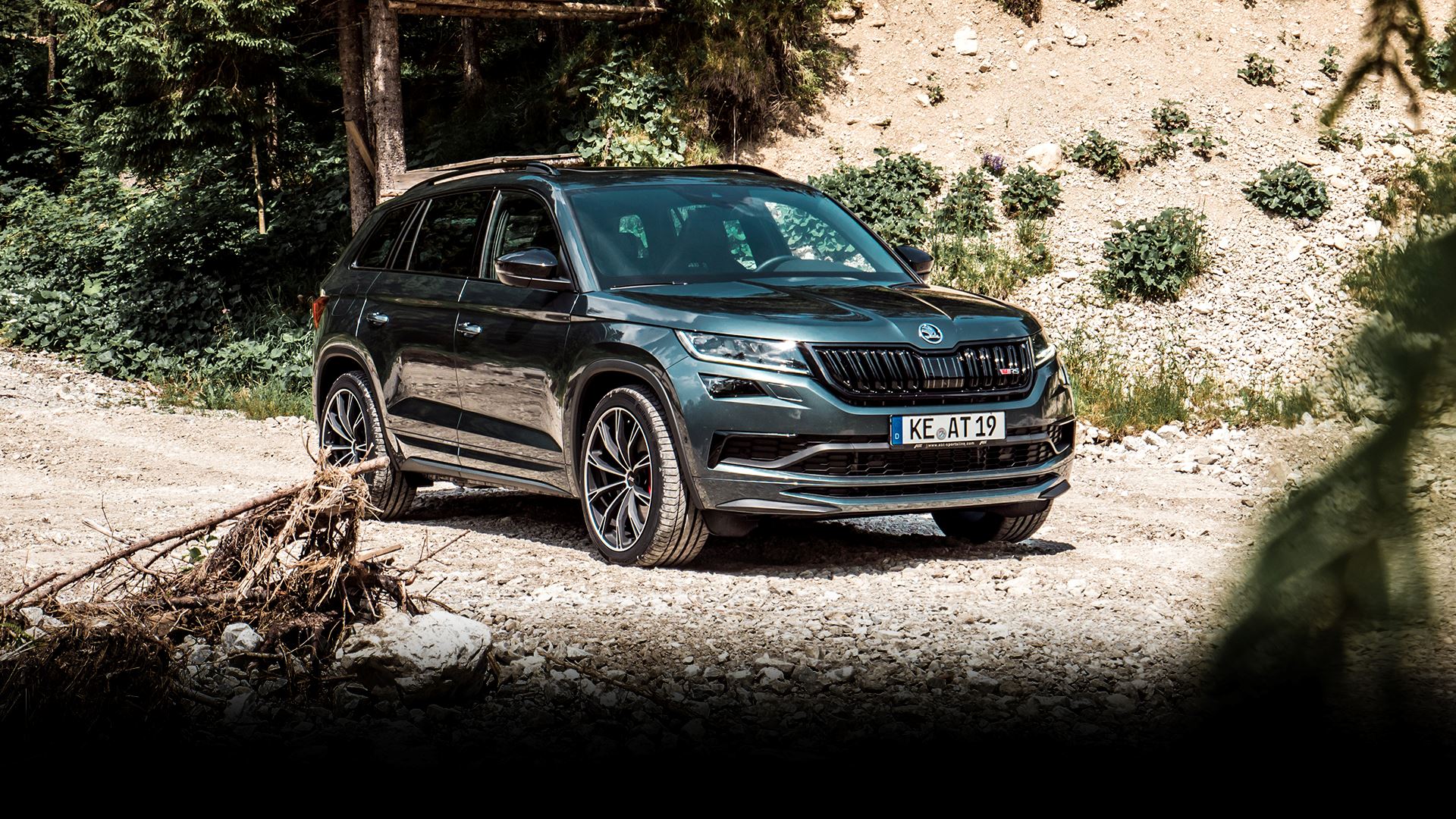Fitting child seats into a car can be a difficult task, so we’ve tested SUVs and MPVs to determine which models can safely and comfortably accommodate them
While SUVs have overtaken MPVs as the top choice for most family buyers, the question remains: how well do they handle the challenge of seating children?
5 Cars With Easy Car Seat Access
Getting a child in and out of a car seat shouldn’t feel like a workout. Whether you’re a new parent or juggling multiple little ones, convenience and comfort matter—especially during the daily hustle.
Some cars just make life easier with wide door openings, lower step-in heights, and user-friendly LATCH systems. In this article, we’re spotlighting five cars that truly stand out for easy car seat access, saving you time, energy, and a whole lot of back strain.
Skoda Kodiaq (7 seat)
- NCAP overall safety rating: 5 stars
- Child occupant score: 77%
- Price from: £34,550
- Target Price from: £32,885
Most versions of the Skoda Kodiaq come equipped with seven seats as standard, with the exception of the entry-level SE Drive trim, which is available only with five.
The second-row seats split 60/40 and can be manually slid forwards and backwards. Compared to other large SUVs in this test, the Kodiaq is not as wide, and we were only able to install two child seats in the second row.
Legroom is also more limited, and we had to move the second-row bench backwards to accommodate our infant seat, which in turn reduced space for anyone seated behind.
However, access to the third row is straightforward, and we were able to position the third child seat in the back row.
Family-friendly features include a fold-down armrest with three cupholders in the centre of the second-row seatbacks, along with a cupholder and a narrow pencil tray located in the third row.
Raising the third-row seats from the boot floor is simple, and while the seats themselves are wide, they are positioned relatively low.
Among the available Skoda Kodiaq powertrains, our preferred choice is the mild-hybrid 148bhp 1.5 TSI e-TEC 150 turbocharged petrol. While it needs to be pushed a bit when the vehicle is fully loaded, the performance it delivers is more than adequate.
In our testing, it accelerated from 0-60mph in 9.5 seconds – more than half a second quicker than the mild-hybrid Peugeot 5008 Hybrid 136.
If you’re after stronger mid-range pull, the diesel options are more suited to the task. The 148bhp 2.0 TDI 150, for instance, offers better low-rev pulling power, even with a full load.
For those needing extra muscle, the 190bhp diesel stands out as a great towing option. It can tow a caravan with ease and comes with standard four-wheel drive – something that’s not available on the Citroën C5 Aircross or the Peugeot 5008.
A 201bhp plug-in hybrid (PHEV) variant is also available, carrying the 1.5 TSI iV PHEV badge. It’s lively on the move, but what’s equally impressive is its official electric-only range of up to 76 miles – a significant jump from the 5008 PHEV’s 48-mile figure. However, do keep in mind that the Kodiaq PHEV is not offered as a seven-seater.
The ride quality in the Kodiaq is notably strong. While it may not be as soft as the Citroën C5 Aircross, it’s more composed, meaning it avoids excessive body roll. It also absorbs bumps better than the firmer Seat Tarraco and 5008, though it doesn’t quite reach the comfort levels of the VW Tayron.
Ride comfort is consistent throughout the range, with only the harshest potholes and surface flaws producing an audible thump. Even the heavier PHEV variant handles rough patches well, though it doesn’t feel quite as supple as other versions.
Skoda offers an optional adaptive suspension system called Dynamic Chassis Control (DCC), which lets you adjust the stiffness of the ride with the press of a button. However, we don’t consider it a necessary upgrade, as the standard setup already provides excellent comfort and control.

In terms of handling, the Kodiaq strikes a good balance with its comfort-oriented suspension. While it’s not as agile as the Seat Tarraco or VW Tiguan, it still handles bends with confidence and is very easy to drive.
Compared to models like the wallowy C5 Aircross, Land Rover Discovery Sport, or the Tayron, it feels more composed and engaging on twisty roads.
One standout feature is the steering. It’s light and effortless at low speeds, making urban driving a breeze, but it firms up nicely on open roads. The steering is also accurate without being overly twitchy, allowing you to guide the car precisely through corners.
From the SE L trim and up, you can opt for a drive mode selector, which adds more weight to the steering in Sport mode, but this feature isn’t essential for most drivers.
It’s worth mentioning that the extra weight of the PHEV variant makes it slightly slower to react during sharp direction changes compared to the rest of the Kodiaq lineup.
The Kodiaq proves to be a comfortable cruiser on long drives. While there is some wind and road noise, and the engines can sound a bit rough under hard acceleration, the cabin remains quiet enough for normal conversation at motorway speeds without needing to raise your voice.
When driving in electric mode, the PHEV is impressively quiet. However, once the petrol engine kicks in, it exhibits the same coarse tone as other variants. Its regenerative braking system, which helps recharge the battery, affects the feel of the brake pedal.
It doesn’t offer the same smooth and progressive braking as the standard petrol and diesel models, which are easier to bring to a stop gently.
The dual-clutch automatic gearbox in the Kodiaq delivers smooth shifts, but there’s a slight delay when pulling away from a stop or when demanding sudden acceleration. That said, it’s quicker to respond than the slower six-speed automatic found in the Peugeot 5008.
BMW X7
- NCAP overall safety rating: NA
- Child occupant score: NA
- Price from: £84,975
- Target Price from: £82,909
Positioned at the top of BMW’s SUV range, the expansive X7 offers enough room to carry an entire ice hockey team in luxurious comfort.
Among the luxury SUVs in this test, its third-row seats are notably more spacious. The wide-opening rear doors and sliding second-row seats provide excellent access.
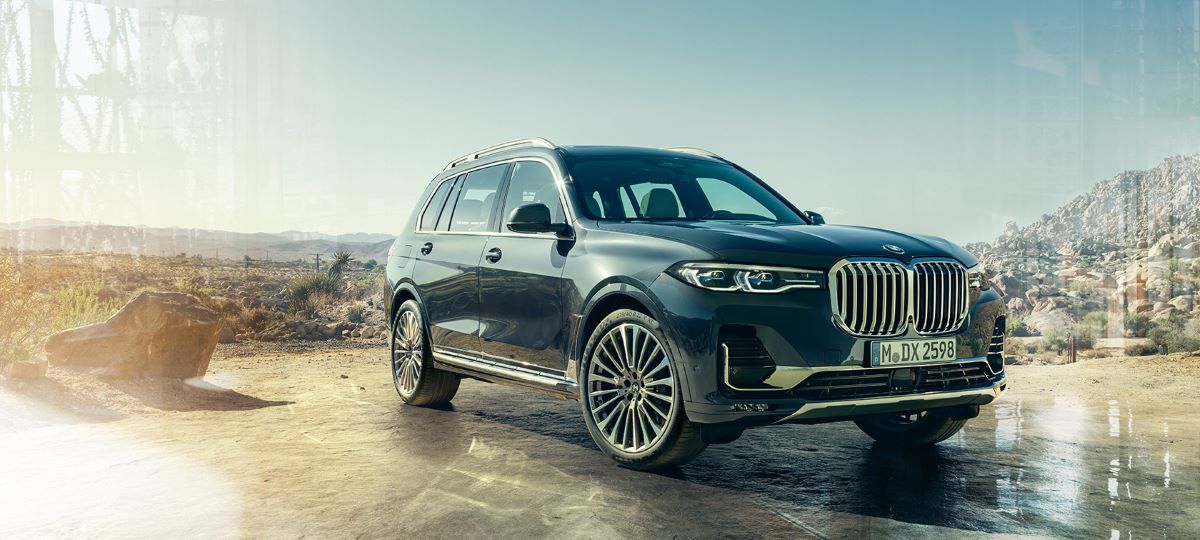
The second-row seats can be adjusted electrically using switches mounted on them, or you can operate buttons located in the boot to fold each of the five rear seats individually.
Both rear seating rows feature two Isofix mounts apiece, which are easy to access clearly visible once you open a flap, rather than hidden between the seat base and backrest.
While we weren’t able to fit all three child seats in the second row, placing one in the third row was straightforward.
For added comfort and practicality, the second and third-row passengers are provided with their own air-conditioning controls and a total of four cupholders.
Genesis GV80 (7 seat)
- NCAP overall safety rating: 5 stars
- Child occupant score: 87%
- Price from: £66,020
- Target Price from: £66,020
This luxury brand from South Korea is a relatively new arrival in the UK market, but its vehicles are impressively well-equipped and offer strong value for money.
The GV80 is available in five, six, or seven-seat configurations, with the mid-range seven-seat Luxury model being our preferred choice.
While we weren’t able to fit three child seats across the second row, installing two in the Isofix-equipped outer seats was straightforward.
One seat, intended for an older child, was secured with a seatbelt in the third row behind a large infant seat, and no one felt cramped. The second-row seats are split 60/40 and can be slid backwards and forwards manually.
However, by selecting the optional Second Row Comfort Pack, you gain electrically sliding and reclining second-row seats, as well as third-row seats that can be raised or lowered using buttons in the boot.
Access to the third row is easy, and the seat bases are relatively high, so the space doesn’t feel confined or uncomfortable.
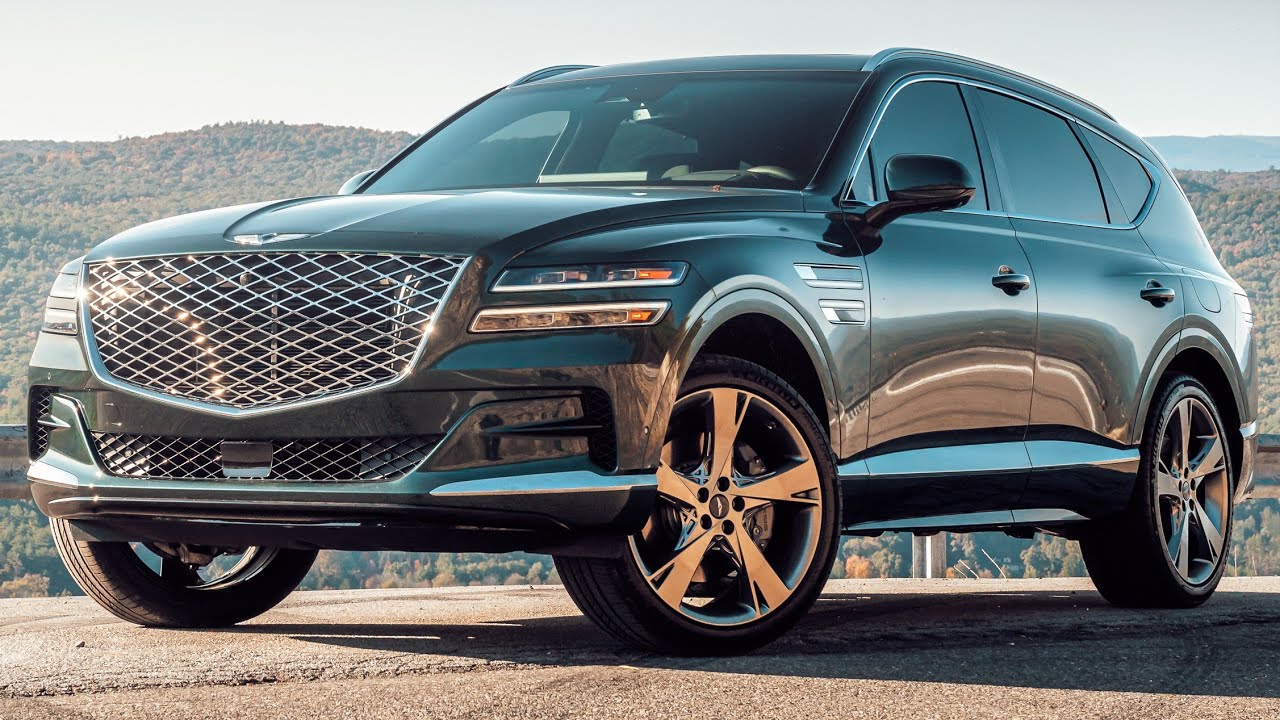
The 2025 Genesis GV80 brings a long list of strengths to the table. Among its highlights are an impressively smooth ride quality, a quiet and well-appointed cabin packed with premium materials, an abundance of luxury and technology features at an attractive price point, and one of the longest warranty coverages in its class.
That said, it’s not without drawbacks. The base V6 trim now carries a much steeper price tag, the optional third-row seat is quite compact, and fuel economy is below average for the segment.
As for what’s new in 2025, the GV80 sees subtle styling revisions to its exterior, a restructured trim lineup, and a major change inside the cabin—a massive 27-inch screen that merges the instrument cluster and infotainment display into one sleek unit. All these updates are built upon the foundation of the first GV80 generation, which originally launched in 2021.
If you’re still skeptical about Genesis as a legitimate luxury brand, the GV80 should put those doubts to rest. This midsize SUV doesn’t just match legacy luxury automakers in features—it rivals them in execution. The materials inside are top-notch, with soft leather upholstery and real wood trim that feels genuinely upscale.
The exterior and interior designs are modern, elegant, and eye-catching. For 2025, Genesis also introduces a new coupe-style version of the GV80, which is reviewed separately. Overall, the GV80 feels like Genesis’ declaration of confidence—a celebration of its standing in the luxury SUV market.
When it comes to running costs, estimates for the 2025 GV80 2.5T Standard 4dr SUV AWD (2.5L 4cyl Turbo 8A) are based on 15,000 miles per year with a driving mix of 55% city and 45% highway.
Using premium unleaded fuel priced at $3.91 per gallon in North Dakota, the monthly fuel cost for the GV80 comes out to approximately $230. By comparison, the average for a large SUV is around $226 per month.
One of the most impressive features of the GV80 is its optional Electronically Controlled Suspension with Road Preview. Unlike typical reactive suspensions that respond only after encountering imperfections, this system is proactive.
A forward-facing camera scans the road surface ahead, identifying bumps and potholes in real time. For instance, if the passenger-side tires are about to roll over a pothole, the system can soften the suspension at just the right corner to reduce the impact before it happens.
This tech allows the wheel to glide over imperfections more smoothly, minimizing cabin disturbance. While this kind of system is beginning to appear in high-end luxury models, it’s still a rarity at the GV80’s price point—making it a standout innovation in this class.
Mercedes GLE (7 seat)
- NCAP overall safety rating: 5 stars
- Child occupant score: 90%
- Price from: £73,100
- Target Price from: £73,100
The latest generation of the Mercedes GLE is the first to come with seven seats as standard, with the exception of the entry-level 300d and the 350de plug-in hybrid models.
The second row is impressively spacious, allowing us to fit all three child seats side by side. The two outer seats were secured using the Isofix mounts.
Although the centre seat lacks an Isofix point, making it a bit tricky to secure the third child seat with the seatbelt, we had the alternative of placing that seat in the third row.

The second-row seats are split 60/40 and can be adjusted using electric controls located on the seatbacks and side doors. In addition, buttons in the boot allow you to fold all five rear seatbacks flat.
While the third-row space doesn’t quite match the roominess of the BMW X7, each occupant still benefits from a cupholder and a small shelf, along with dedicated air-conditioning controls for both the second and third rows.
Volvo XC90
- NCAP overall safety rating: 5 stars
- Child occupant score: 87%
- Price from: £61,995
- Target Price from: £56,769
Every version of the XC90, including the Recharge T8 plug-in hybrid, comes equipped with seven seats as standard.
The second row consists of three individual seats that can slide forwards and backwards, allowing parents to adjust legroom between the second and third rows as needed.
Isofix mounts are provided on the two outer seats in the second row, while the remaining rear seats can still accommodate child seats secured with seatbelts.
Although the second row wasn’t wide enough to fit all three of our child seats, we were able to place one in the third row and made enough legroom by sliding the seat in front of it forward.
The second-row seats fold flat using large levers, and the seatbacks fold in a concertina style to rest neatly on the bases.
Other family-friendly features include cupholders for all rear passengers and lidded storage compartments for those seated in the third row.
The Volvo XC90’s interior is a masterclass in understated elegance, combining a clean, attractive design with high-quality materials that contribute to a cozy and premium atmosphere.
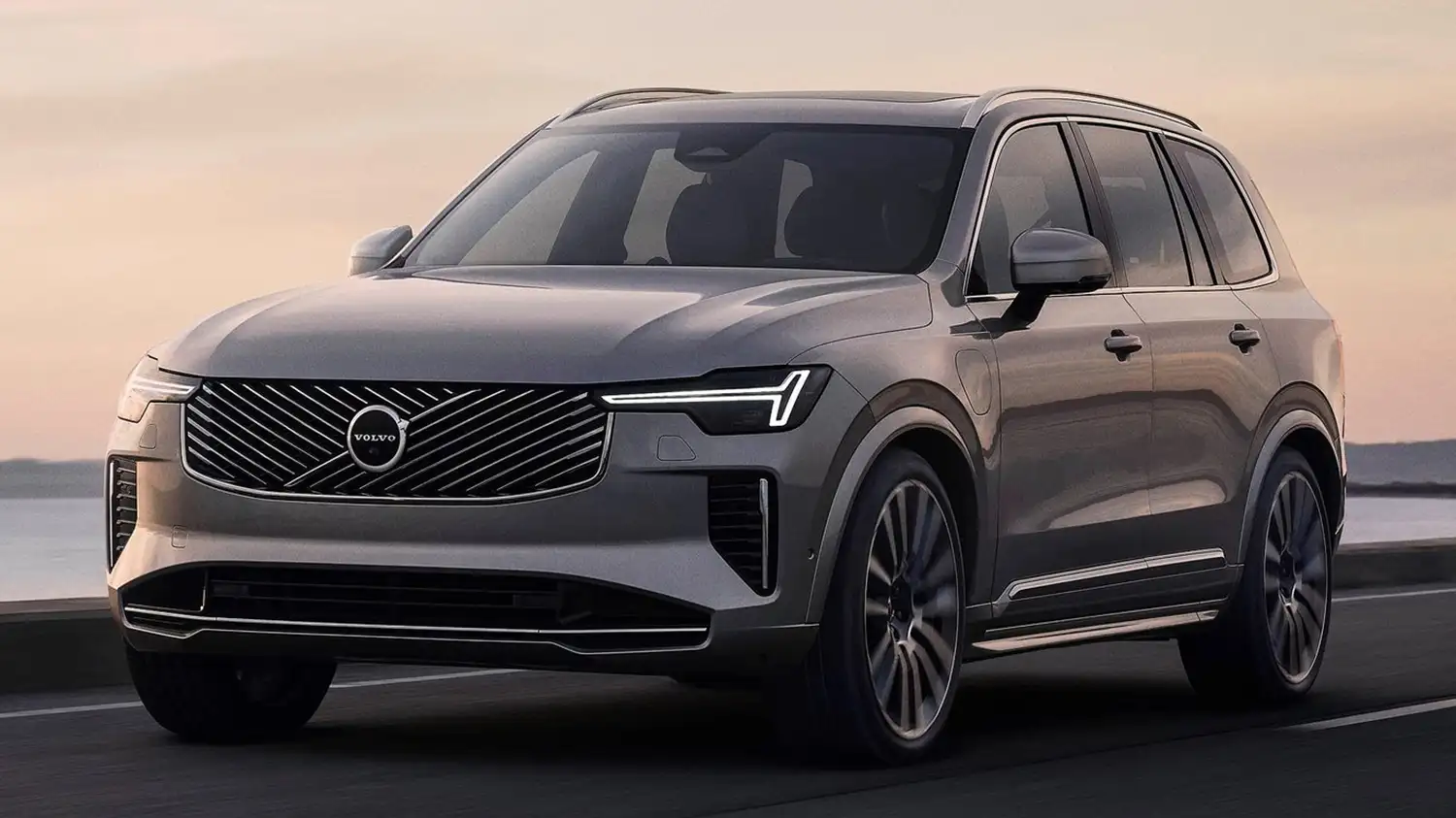
In its latest iteration, the XC90 receives upgraded materials, a redesigned dashboard, a refreshed center console, and new textile upholstery choices. Buyers can choose between 5-, 6-, or 7-seat layouts depending on their needs.
However, adults may find the third-row seating cramped, especially on longer journeys. The XC90’s broad and boxy design benefits cargo-hauling capacity, although the interior storage compartments don’t offer quite as much space as some rivals.
Infotainment and connectivity have also seen meaningful upgrades. Early 2025 XC90 models come with a sleek, tablet-like 9.0-inch touchscreen as standard, while the updated version introduces a larger 11.2-inch display.
A 12.3-inch digital gauge cluster is included on all trims, and a head-up display is available as an option. The system runs on Google’s Android Automotive software, offering built-in Google Maps for navigation and integration with Google Assistant for voice control.
Importantly for iPhone users, “Apple CarPlay is standard on both screens.” Audio quality is solid with the standard 10-speaker stereo, which includes a 220-watt amplifier. For those seeking a more immersive sound experience, Volvo offers two premium upgrades: a 600-watt, 14-speaker Harman/Kardon system or a high-end 1410-watt, 19-speaker Bowers & Wilkins setup.
True to Volvo’s heritage, the XC90 is packed with advanced driver-assistance features that emphasize safety. To view detailed crash test results, consumers can visit the National Highway Traffic Safety Administration (NHTSA) and Insurance Institute for Highway Safety (IIHS) websites.
The XC90 includes several key safety technologies as standard: “Standard automated emergency braking with pedestrian and cyclist detection,” “Standard lane-departure warning and lane-keeping assist,” and “Standard adaptive cruise control with a lane-centering feature.”
Warranty and maintenance coverage is solid, though not class-leading. The coverage is competitive in terms of years and mileage, but what gives Volvo an edge is its complimentary maintenance program.
Specifically, “Limited warranty covers four years or 50,000 miles,” “Powertrain warranty covers four years or 50,000 miles,” and “Complimentary maintenance is covered for three years or 36,000 miles.” Together, these elements make the XC90 a well-rounded and compelling choice in the luxury midsize SUV segment.
Cars That Make It a Workout
Car seats are essential for ensuring the safety of young children in vehicles until they grow enough for modern automotive safety technologies to protect them properly.
The evaluation categories included latches, a rear-facing infant seat, a rear-facing convertible seat, a forward-facing convertible seat, a high-back booster seat, and third-row access, when applicable.
We reviewed the study’s findings to identify which models had the weakest performance.
2022 Hyundai Venue
The Hyundai Venue landed at the bottom of the rankings for two-row SUVs. It even received a D grade in the rear-facing convertible seat category. Still, the model earned A ratings for its latches and forward-facing convertible seat.
The Venue is Hyundai’s most affordable crossover. It comes equipped with features like an 8.0-inch infotainment display and Hyundai’s SmartSense safety package, which includes pedestrian detection, forward collision avoidance, and automatic emergency braking.
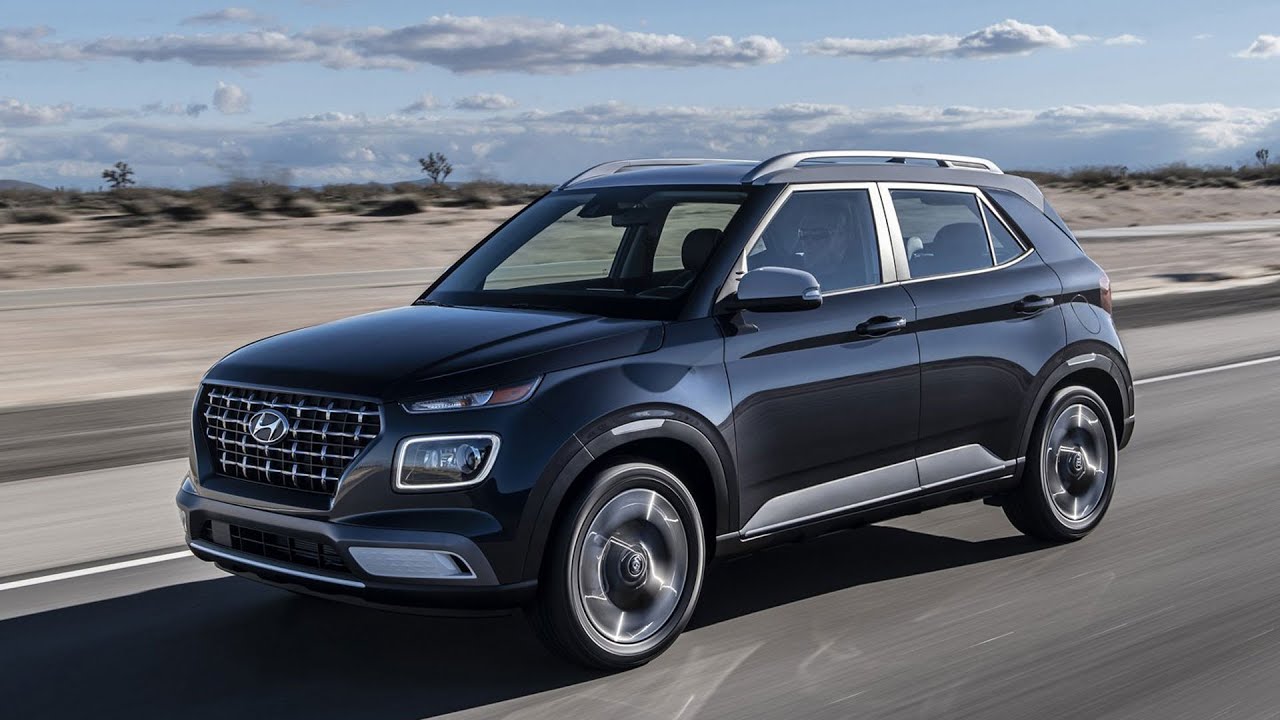
Originally, a manual transmission was offered, but Hyundai discontinued it due to low demand. The 2022 Hyundai Venue stands out as a practical and stylish option in the extra-small SUV segment.
Among the Venue’s strong points are an “impressive number of features for your money,” its accessibility—“for its size, easy to get into and out of,” and its “simple control layout.”
However, there are some drawbacks. The engine can be unrefined at times—“engine sounds and feels a little coarse at higher speeds”—and the absence of all-wheel drive is a limitation: “All-wheel drive is unavailable.” Additionally, it’s “one of the smaller extra-small SUVs in the class,” which might not suit everyone’s space needs.
For 2022, Hyundai made only minor updates to the Venue, with some small changes to standard feature availability. The Limited trim now replaces the outgoing Denim trim. The Venue continues as “part of the first Venue generation introduced for 2020.”
In a market where buyers once reluctantly turned to new economy cars just to escape the headaches of unreliable used vehicles, the 2022 Hyundai Venue presents a far more appealing alternative.
It delivers “a level of style, utility and technology unheard of in the past,” making it a smart choice for those seeking value without compromising on modern amenities
2023 Toyota Sequoia
The Toyota Sequoia received C grades in both the third-row forward-facing convertible and booster seat categories. On the other hand, it achieved A scores in the latches, infant seat, and rear-facing convertible categories.
The Sequoia entered its third generation with the 2023 model year. This body-on-frame, three-row SUV can tow up to 9,000 pounds.
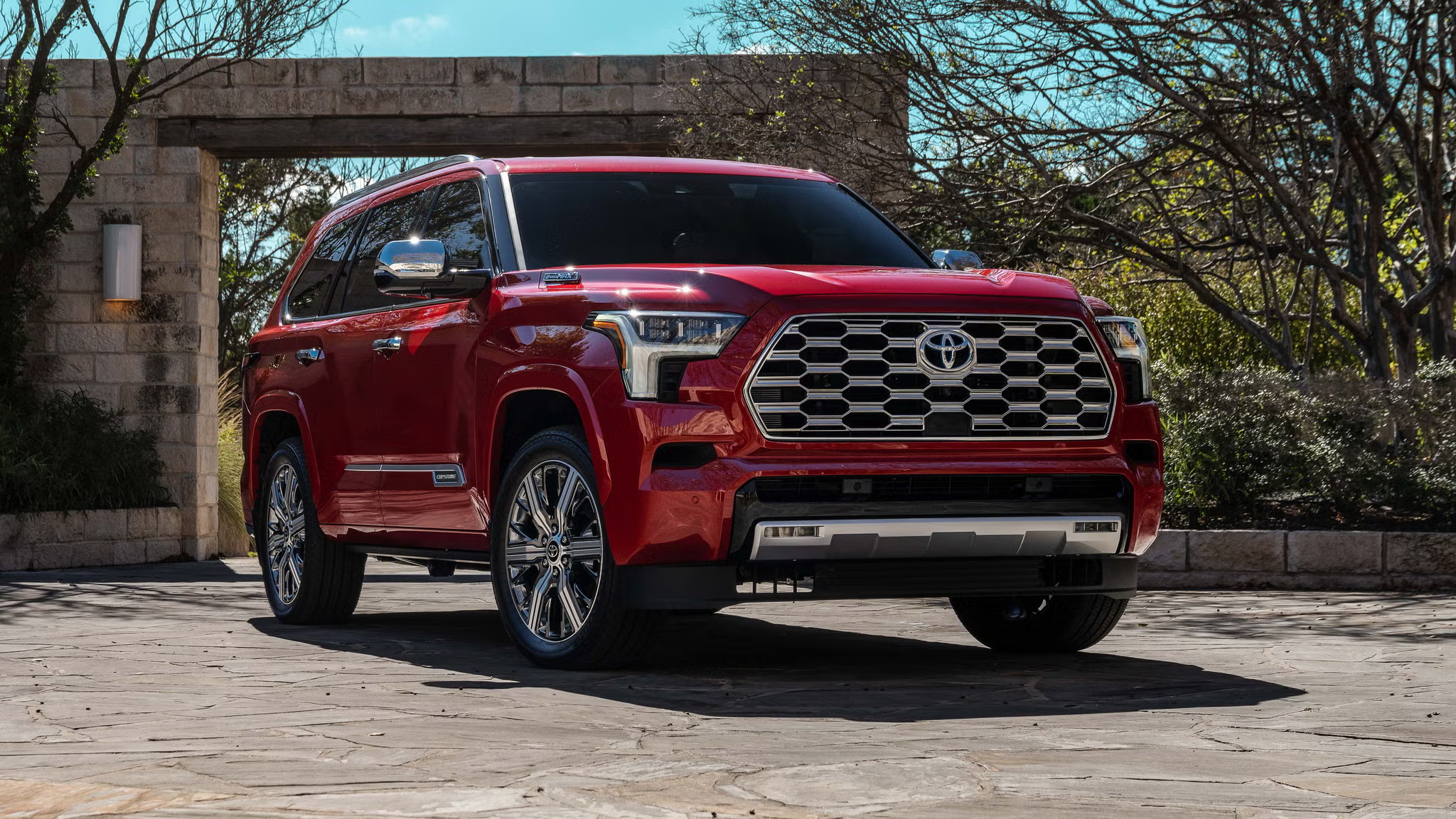
Buyers can choose high-end features like a 14.0-inch infotainment screen, 14-speaker sound system, heated and ventilated second-row captain’s chairs, and American Walnut open-pore wood interior trim.
Toyota arguably over-delivered with its new, modernized third-generation 2023 Toyota Sequoia when it comes to overall refinement and functionality. The clean-sheet redesign of Toyota’s full-size three-row SUV brought exactly what was expected and more.
However, where Toyota may have under-delivered is with the Sequoia TRD Pro—specifically in relation to its pricing. This aspect stands out as the main concern regarding this otherwise bold, off-road-focused variant.
The 2023 Toyota Sequoia TRD Pro starts at $77,660. To put that into perspective, that figure exceeds the cost of rivals like the GMC Yukon AT4—even with its upgraded 6.2-liter engine—and the Ford Expedition Timberline.
With its aggressive TRD Pro front styling and unique “technical camo” fenders, the Sequoia TRD Pro seems geared toward adventurous, fun-loving individuals who’ve transitioned into family life. However, at this steep price point, it’s more likely to catch the attention of a more upscale demographic.
The TRD Pro test vehicle we reviewed, equipped with four-wheel drive, carried a total sticker price of $80,196. That number creeps up quickly. The unique Solar Octane exterior paint, exclusive to the TRD Pro, added $425, and while it’s “worth it,” given how much attention it grabs, it’s one of several extras.
Additional options included an integrated dashcam ($499), a trailer ball mount ($87), a TRD air filter ($130), and a TRD roof rack ($1,395). It’s worth noting that the roof rack, while factory-installed, still created noticeable wind noise—though it didn’t whistle. This isn’t surprising, as accessories that modify a vehicle’s aerodynamics often lead to such issues.
2022 BMW i4
The BMW i4 was one of two electrified models to earn a 2.6 score. It received its lowest marks—two points each—for the infant seat, rear-facing convertible, and booster categories.
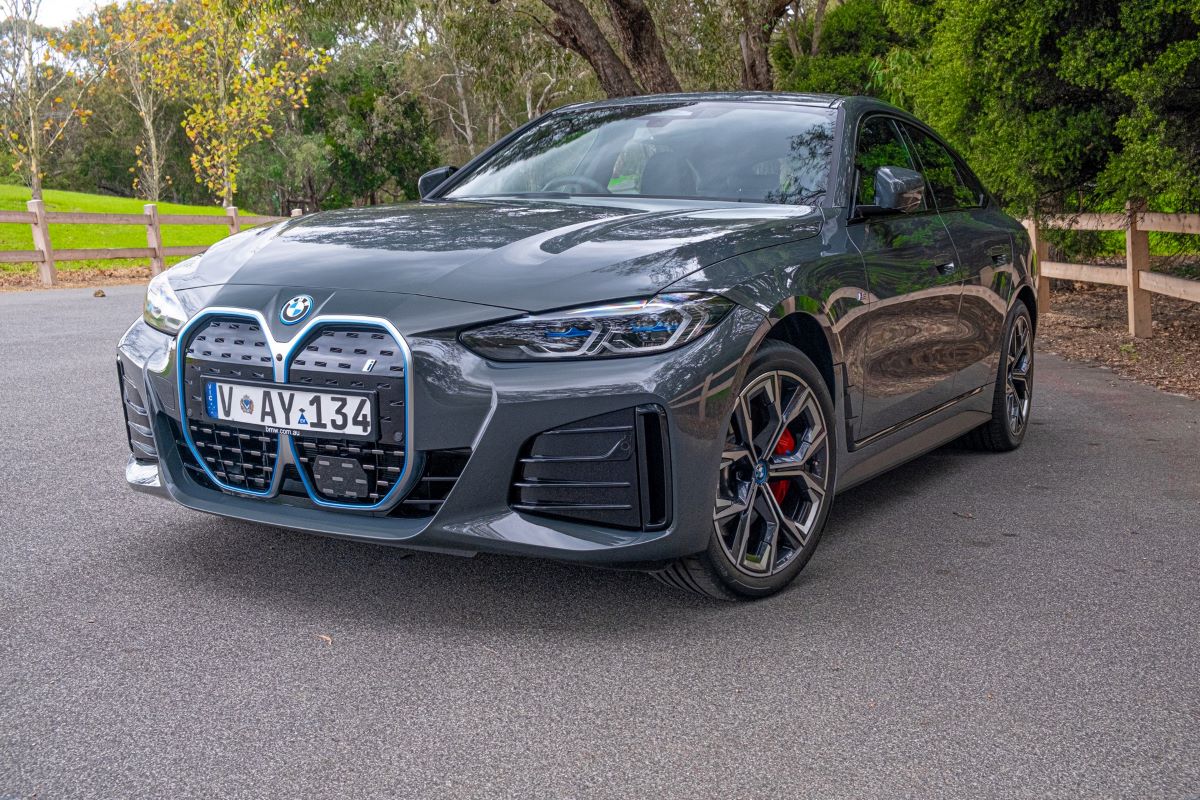
The i4 is offered in eDrive35, eDrive40, and M50 trims in the U.S. Among them, the eDrive40 with 18-inch wheels offers the longest range, delivering up to 301 miles per charge.
The 2022 BMW i4 is a striking example of how BMW continues to stay within its traditional realm of crafting small luxury sport sedans—only this time, it does so without a gasoline engine. The i4 is an all-electric vehicle, signaling BMW’s push into the EV space while maintaining the styling cues that appeal to longtime fans.
Its exterior closely resembles the 4 Series Gran Coupe, which appears intentional on BMW’s part to ensure it keeps the attention of traditional buyers. However, underneath the familiar design, the i4 features a completely new architecture, along with a reworked suspension system and fresh electronic components.
The i4 delivers several key advantages. For starters, the M50 model offers impressive acceleration, living up to BMW’s performance reputation.
The ride quality is comfortable, and the interior meets the high standards expected from BMW. Additionally, the i4 includes a wide range of useful tech and driver assistance features, making it competitive in the growing EV luxury segment.
However, there are some drawbacks. The i4 is expensive compared to the competition, which may deter buyers looking for value. Driving dynamics, while solid, are less engaging than those of some rivals and traditional gas-powered BMWs. Rear seat passengers might also feel cramped, as rear headroom is mediocre.
2023 Kia Niro EV
The other low performer in this category was the Kia Niro EV, which received C grades in both types of convertible seats and in the infant seat category.

Despite its lower child seat usability, the Niro EV earned a favorable review receiving an 8.5/10 rating. Price was cited as the main drawback. However, child seat compatibility is not a factor considered in the site’s evaluations.
Kia gave its compact crossover, the Niro, a full redesign for the 2023 model year, making it slightly longer and lighter while significantly enhancing its overall appearance. The second-generation Niro’s standout design element is the “aero blade,” a sharply angled panel integrated into the C-pillar.
When painted in a contrasting color, this feature evokes the blade on the first-generation Audi R8. The front-end styling has also been updated, with the headlights now positioned next to the grille, and the crossover adopts rugged-looking body cladding for a tougher aesthetic.
For 2023, the Kia Niro comes in three electrified configurations: a traditional hybrid, a plug-in hybrid, and a fully electric model. This review focuses on the Niro EV, tested in the well-equipped Limited trim, priced at $52,995. The entry-level Niro EV Premium starts at $44,995, while the mid-level Premium+ version is listed at $47,995, placing it between the two.
The 2023 Kia Niro EV is powered exclusively through the front wheels, using a permanent magnet synchronous motor that produces 201 horsepower and 188 lb-ft of torque, fueled by a 64.8-kWh lithium-ion polymer battery.
While the previous generation Niro EV delivered the same horsepower, it offered more torque at 291 lb-ft, giving it more punch off the line. In comparison, the new model is tuned for efficiency rather than performance, and although its acceleration is perfectly acceptable, it lacks the urgency of its predecessor.
The Niro EV’s driving dynamics are competent but fail to excite. Despite having 201 horsepower and 188 lb-ft of torque, it’s not a performance-oriented EV.
This is evident when cornering, where the narrow 215/55R17 tires make it clear that they prioritize efficiency over grip. That said, backing off the pace reveals a crossover with a natural-feeling steering response and predictable handling.
To maximize range, Eco Mode is the best setting, though it noticeably dulls acceleration. Sport Mode, on the other hand, makes the most of the available torque, delivering livelier performance when needed.
2023 Kia Carnival
The Kia Carnival was the sole minivan included in this assessment, making it both the best and the worst in the segment.
Its weakest score was a C for the third-row forward-facing convertible seat. However, it received A ratings in the latch system, second-row convertible seat, and booster categories.

The newest generation of the Carnival debuted for the 2022 model year, replacing the Sedona. Kia introduced several upscale interior features, including dual 12.3-inch screens, a night vision camera for the rear seats, and a rear-seat entertainment setup.
When you spot the 2023 Kia Carnival from the corner of your eye, you might mistake it for a mid-size SUV. This design choice—and Kia’s marketing—seem to be working effectively. However, make no mistake, the Carnival is entirely a minivan.
Inside, the Carnival’s boxy shape and low floor provide much more cargo space than what you’d find in the typical crossover. All models of the Carnival are powered by a smooth-running 290-hp 3.5-liter V-6 engine paired with an eight-speed automatic transmission.
Kia also includes a wide array of standard driver-assistance features, with even more tech offerings available on higher trims. Despite the Carnival’s clear minivan identity, don’t let that turn you away.
Appreciate its smooth road manners, increased practicality, and spacious interior. After all, you likely don’t need all-wheel drive or high ground clearance to suit your needs.

